Introduction: Make Japan’s Roads Your Hotel
Hello! I’m Ken, the editor-in-chief of Tokyo Insider Guide.
“Sticking to a fixed route is boring.” “I want to travel every corner of Japan at my own pace.”
For the adventurous soul in you, I’m here to propose the ultimate form of travel.
A campervan trip in Japan is more than just a means of transportation. It’s a “moving hotel” and a “magical house” that takes you right into the heart of Japan’s most stunning landscapes.
By reading this article, you’ll learn everything you need to know about campervan travel in Japan, from driver’s licenses to where to spend the night and how to craft the perfect journey. Now, let’s set off on a trip to discover a side of Japan no one else knows!
Why a Campervan Trip in Japan Now? The 3 Key Charms
① Ultimate Freedom
There’s no need to worry about check-in times. If you fall in love with a place and want to stay another night, you can. Your mood dictates the day’s route.
② Have Spectacular Views All to Yourself
Wake up at the foot of Mt. Fuji, fall asleep under a sky full of stars. The view from your window becomes a scene you could never see from a hotel.
③ A Journey into Japan’s “Everyday Life”
Buy fresh ingredients at a “Michi-no-Eki” roadside station or a local supermarket, and stop by an onsen for a day bath. The real pleasure of a campervan trip is immersing yourself deeply in the authentic, daily life of Japan, not just the tourist spots.
【Crucial】Basic Rules for Driving in Japan
This is the most important part. Please read it carefully.
International Driving Permit (IDP)
An “International Driving Permit (IDP)” based on the 1949 Geneva Convention, issued in your home country, is mandatory. Be sure to obtain it before your departure. (Note: Licenses from some countries, such as Taiwan and Germany, can be used with an official Japanese translation).
Traffic Rules
In Japan, you drive on the left side of the road. Also, be particularly careful to make a temporary stop at “止まれ” (Tomare/Stop) signs, as this is one of the most common violations among international travelers.
Vehicle Size
Japanese roads, especially in rural and urban areas, are often narrower than you might imagine. For beginners, I strongly recommend a relatively compact type of campervan called a “van conversion” (VanCon), often based on vehicles like the Toyota HiAce.
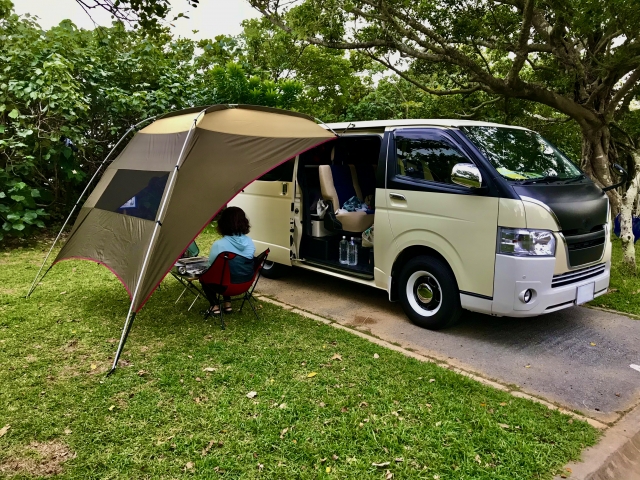
Step-by-Step: A Complete Guide from Booking to Return
Step 1: Choose a Rental Company
First, choose a rental company that has good foreign language support.
- Nationwide: Japan C.R.C. (has offices in Narita and Tokyo)
- Narita Airport: VANTECH RENT A CAR, Travellers Autobarn Japan
- Haneda Airport: TOKYO RV CAMPERS
If you are confident in your communication skills, you might also consider using a comparison site or a car-sharing service.
Step 2: Choose a Vehicle and Equipment
Select a vehicle based on the number of people. If you want to spend your time comfortably inside the van, a model with an air conditioner and cooking facilities (sink, stove) is recommended. Always check if you can rent bedding and cooking utensils.
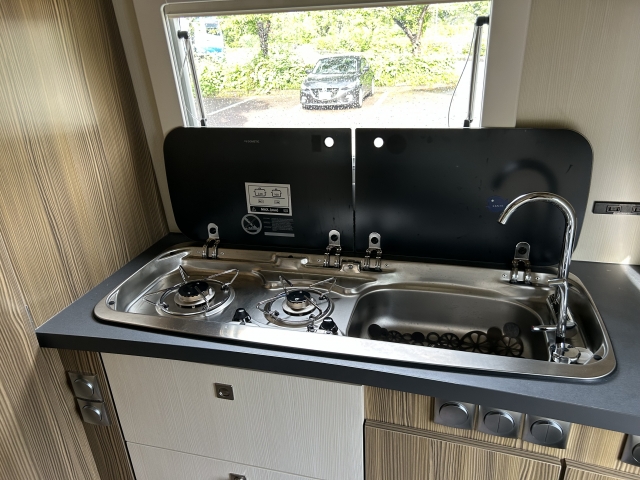
Step 3: Booking and Paperwork
Most companies allow you to book on their websites. You will need three documents: your “Passport,” “your home country’s driver’s license,” and your “International Driving Permit (IDP).”
Step 4: Pickup and Orientation on Departure Day
On the day of departure, a staff member will give you a detailed 30- to 60-minute explanation of how to use the vehicle (water, electricity, heating, toilet disposal, etc.). Make sure to ask any questions you have here.
Step 5: Returning the Vehicle
As a rule in Japan, rental cars must be returned with a full tank of gas. Also, you are responsible for properly disposing of any trash generated inside the vehicle.
Where to Sleep? A Thorough Guide to Japan’s Overnight Parking Spots
Choosing where to park for the night is a crucial point that affects the comfort of your trip. I’ll introduce some of Japan’s typical overnight spots.
① Michi-no-Eki (Roadside Stations): Convenient but with Strict Rules
These are oasis-like places for Japanese drivers, with clean 24-hour restrooms and large parking lots. However, this is a “Michi-no-Eki,” and it’s strictly a rest facility for “napping.” Camping-like behavior, such as setting up tables and chairs outside the vehicle or staying for long periods, is strictly forbidden.

② Auto-Campgrounds: Fully Equipped and Great for Fun
Since these are facilities for camping, you can enjoy activities like setting up a table for a BBQ outside. Many sites offer an AC power hookup, which is a huge advantage as you can use electricity without worrying about the battery. A reservation and fee are required.
③ RV Parks: Comfortable, “Official” Overnight Spots with Power
An “RV Park” is like a combination of the best parts of a Michi-no-Eki and an auto-campground. They are comfortable bases created specifically for campervan travelers, with 100V power outlets and often a place to dispose of trash. A reservation and fee are also required here.
④ How to Find Them? Recommended Websites
Since there are few search sites with foreign language support, the most reliable method is to search for Michinoeki or RVpark on Google Maps near the area you want to visit.
By using your browser’s translation feature, specialized websites can also be very useful.
- For Auto-Campgrounds: “nap” (Japan’s largest campground search and reservation site)
- For RV Parks & Michi-no-Eki: “Kurumatabi Club” (Operated by the Japan Recreational Vehicle Association)
How Much is the Budget? A Realistic Look at Costs
Let’s get a realistic idea of how much a campervan trip might cost.
- Rental Fee: Depending on the vehicle and season, a rough estimate is 15,000 to 30,000 yen per day.
- Gasoline: As of 2025, gas prices in Japan are around 170 yen per liter. Campervan fuel efficiency is not great, so plan your budget accordingly.
- Expressway Tolls: Japan’s expressways are tolled. If you plan to travel long distances, check if you can apply for the “Japan Expressway Pass (JEP),” an unlimited-ride pass for foreign visitors, at your rental company.
- Other Costs: You will also need to budget for RV park or campground fees (3,000-6,000 yen per night), food, and day-use onsen fees (800-1,500 yen per visit).
Ken’s Recommendations! Model Courses from Tokyo by Duration
It can be tough to plan a route in a new country. So, feel free to use these recommended courses I’ve designed from Tokyo as a reference!
【Short-Term】3-4 Days: A Condensed Experience Course
- Plan A: The Golden Route of Scenery & Onsen: Mt. Fuji & Hakone
A classic course where you can spend a night by a lake with views of Japan’s iconic Mt. Fuji, then relax in the hot spring resort of Hakone.
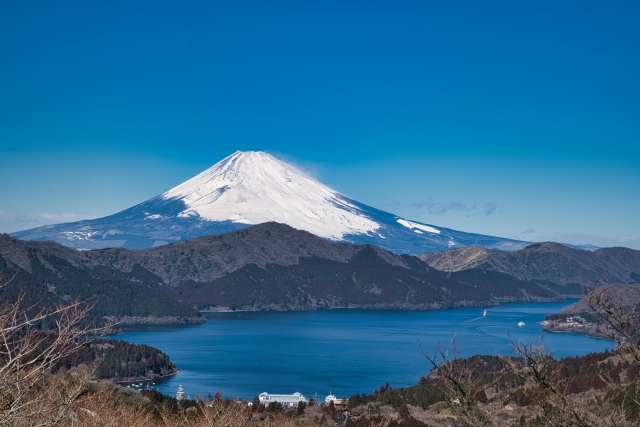
| Recommended Google Map Search Keywords |
| Fuji Five Lakes campground, Hakone day-use onsen |
- Plan B: A Peninsula Tour of Sea & Gourmet Food: Izu Peninsula Loop
Drive along a beautiful coastline and savor fresh seafood. Recommended for those who want to enjoy both varied scenery and great food.
| Recommended Google Map Search Keywords |
| Izu seafood bowl, Nishi-Izu sunset spot |
【Mid-Term】7-8 Days: A Deeper Dive into Japan
- Plan A: Driving Japan’s Rooftop: Shinshu Alps & Castle Towns
From Tokyo to the national treasure, Matsumoto Castle. A grand driving course through the stunning scenery of 3,000-meter peaks like Kamikochi and historic townscapes like Hida Takayama.
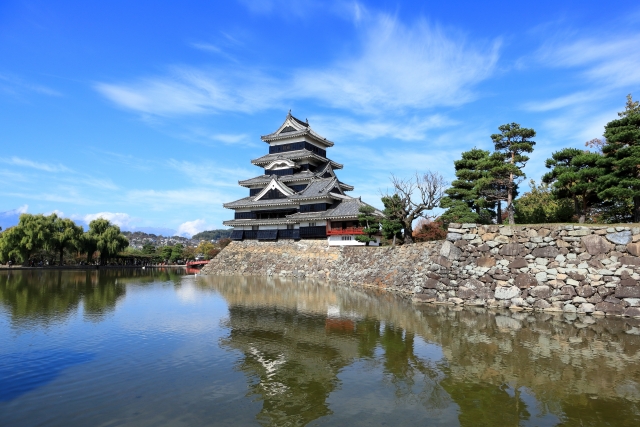
| Recommended Google Map Search Keywords |
| Matsumoto Castle parking, Kamikochi, Hida Takayama, Shirakawa-go |
- Plan B: Nature & Hidden Onsen of Michinoku: Tohoku Scenic Route
Escape the hustle of the city on a healing journey through the vast nature and hidden hot springs of the Tohoku region, including Fukushima’s Bandai-Azuma Skyline and Yamagata’s Zao.
| Recommended Google Map Search Keywords |
| Bandai-Azuma Skyline Fudosawa Bridge, Ginzan Onsen parking,Koiwai Farm |
【Long-Term】14+ Days: An Adventure of a Lifetime
- Plan A: Journey Across the North: Tohoku & Hokkaido Loop (Summer Only)
Take a ferry from Aomori to Hokkaido. The exhilarating feeling of driving across the vast northern island is an unforgettable experience.

| Recommended Google Map Search Keywords |
| Aomori Port Ferry Terminal, Furano lavender field,Funkawan Panorama Park,Lake Mashu,Lake Kussharo,Lake Akan,Cape Soya |
- Plan B: A Grand Crossing of Culture & Nature: West Japan Route
From Tokyo to Kyoto, Nara, Shikoku, and finally Kyushu. A magnificent journey to savor all of Japan’s diversity. Using a “one-way rental plan” for the return is a smart choice.
| Recommended Google Map Search Keywords |
| Shimanto River Chinkabashi, Mount Aso Kusasenrigahama,Nagasaki Dejima,Itsukushima Shrine |
Frequently Asked Questions (FAQ)
Q. How do I take a bath every day?
A. “Higaeri Onsen” (day-use hot springs) and “Super Sento” (large public bathhouses) are available all over Japan. They are clean, comfortable facilities used by many Japanese people.
Q. What about Wi-Fi and power in the vehicle?
A. The campervan itself does not have Wi-Fi. Renting a pocket Wi-Fi device is the most reliable option. It is equipped with a “sub-battery” for power, but its capacity is limited.
Q. How do I dispose of trash?
A. This is one of the most important rules. It is basic etiquette to take any trash generated in the vehicle with you. Never throw it away in the bins at Michi-no-Eki or convenience stores.
Q. Can I travel by campervan in winter?
A. Yes, it’s possible. Many campervans are equipped with a powerful “FF heater” that can be used even when the engine is off. If there’s a possibility of driving on snowy roads, be sure to rent a vehicle equipped with “studless tires.”
Ken’s Final Advice: For a Successful Trip and the Best Memories
The best tip for a successful first campervan trip is “don’t be too greedy.” Plan a flexible schedule with generous estimates for travel time.
Things not going as planned, and minor inconveniences. If you can enjoy even these as a “spice of adventure,” your campervan trip is sure to become the freest and most memorable journey of your life.

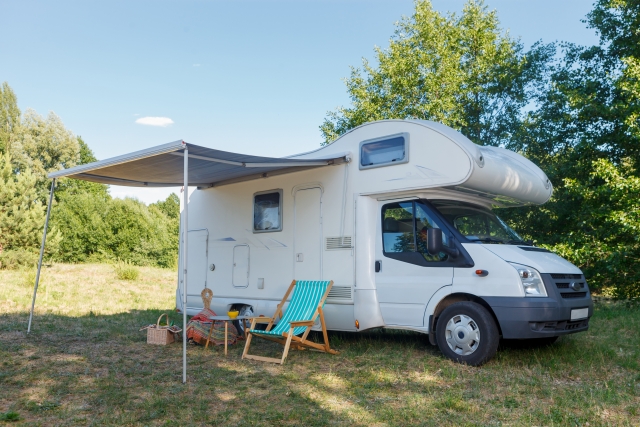


Comments